Before I begin, full disclosure and a little bit of background. Disciples of Tzeentch was my introduction into Age of Sigmar and what got me to start believing the game was worth investing time and energy into. The first batletome was one of the first to shift its design philosophy away from the “Open Play only” design and more towards something recognizable as the modern Matched Play incarnation of the game.
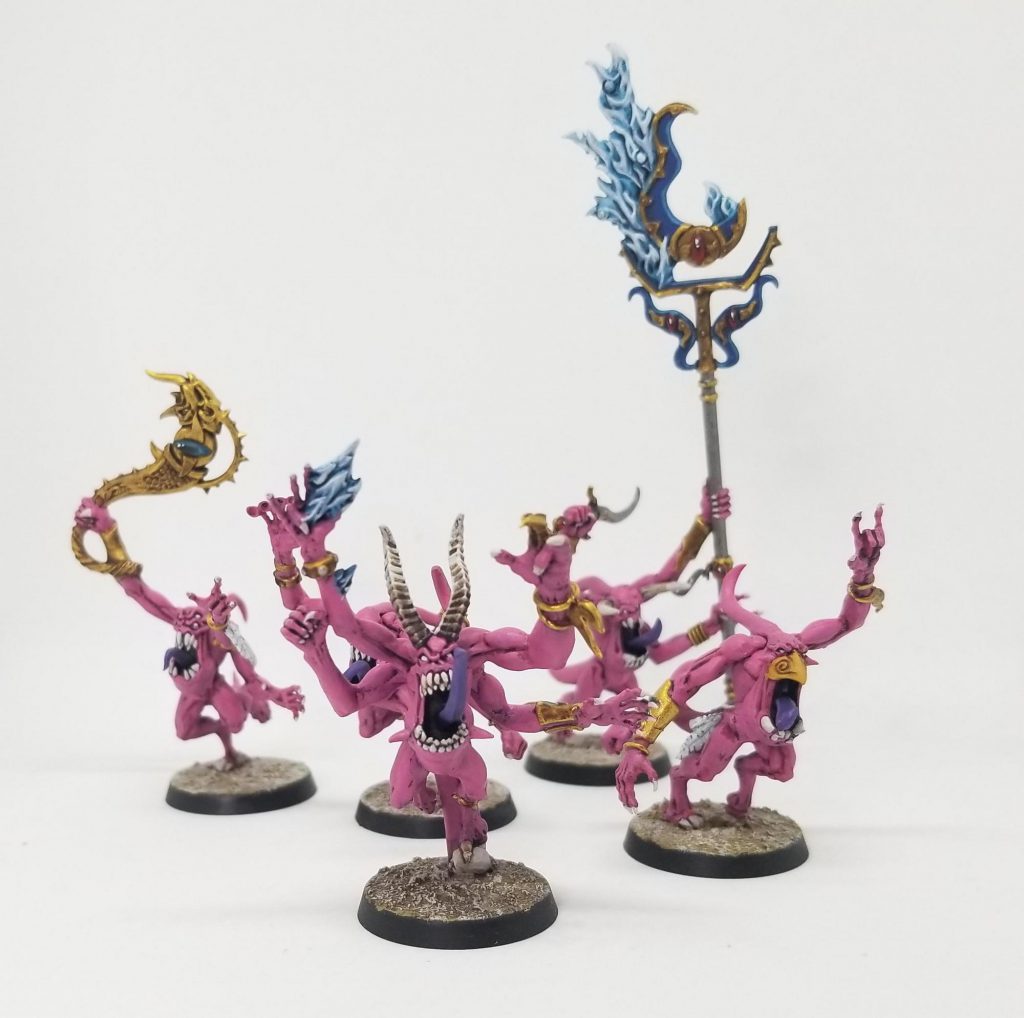
At the time I had only heard of Age of Sigmar in negative terms. The rules were too simple, there were no points, and what was up with that “pretend to ride a horse” thing? A local at the FLGS invited people to come try it out and I had Tzeentch daemons from playing Thousand Sons in 40k and figured this was a good enough jumping off point as any. When I actually read the book I found myself taken in by the design philosophy, it was recognizably similar to 8th edition 40k, which I liked, but had quirky rules. Not “If you have a bigger mustache than your opponent” silliness, but odd things like the relics or army rules that 40k tends to take a more conservative approach to.
The reason for this little background is to establish that I have a strong connection to this book. I’ve been waiting for a long time for this update. Tzeentch has remained relatively competitive. It wasn’t winning many major tourneys but you’d usually see one in the top 8 every so often. I felt like the original book was fine. It needed some changes to the math but the core design was sound. As one would expect, Tzeentch was good at magic, competing with Legions of Nagash for the best Wizards in the game. Tzeentch also is a ranged army, which is powerful in a game where most of the fighting is in melee. While most units tended to have poor saves, you had tools to keep your distance and hopefully weaken the enemy enough before they got too close. The book’s most characteristic trait, however, was that the army had a lot of tricks. Given The Changer of Ways’ capricious nature it made sense that his forces were unpredictable and constantly changing, and the army reflected this.
Games Workshop have kindly provided Goonhammer with a preview copy of this book, so I’ve had a chance to open it up and dig in to all the juicy details. In this review I’m going to go over the core sections of the army with a focus on what has changed and what stayed the same.
Army Abilities
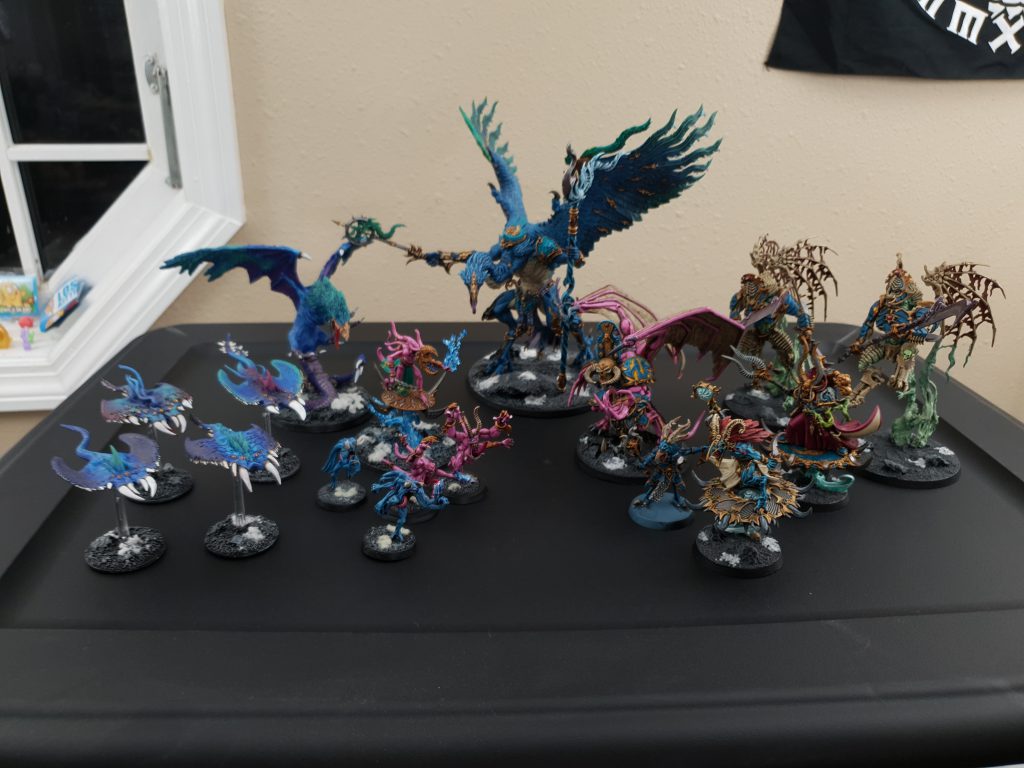
As I stated above, the core concept of the Tzeentch army was fine, but we’d reached the point where it was clear that the numbers needed some tweaking. Thankfully everyone’s favorite army ability remains completely untouched: The Fate Dice are 9 dice you roll at the beginning of the game and then put aside, you can then use these dice to substitute for almost any roll in the game. There’s a few ways to add more dice to the pool but for the most part the power in this relies both in the ability to make critical rolls at the proper time, and also as a psychological effect. Your opponent has to deal with the idea that you are in control of the dice, which can throw them off their game.
Summoning, similarly, has much the same mechanic as before – Age of Sigmar 2.0 released with Soul Wars, and the General’s Handbook granted all the Chaos Gods summoning tables, which accumulated points from different mechanics based on the god (Khorne got points for killing, Slaanesh got points for causing pain etc.). Tzeentch, predictably, got points for spellcasting. If anyone successfully casts a spell (Tzeentch cares not from where the magic flows), you get points which can be banked for summoning daemons. Previously the big issue with the mechanic was that the point costs were too high, so unless you played in extremely high-point games you weren’t likely to get much use out of it. The new battletome lowers the floor while maintaining the ceiling, which is probably the change that was needed.
A new and interesting mechanic for the army is Agendas. These were previewed in the Warhammer World Faction Focus and function a bit like the Sagas of the Spaces Wolves from 40k. A the beginning of the Hero phase you can declare to your opponent you will fulfill one of the Agendas and if you complete the task then the unit who completed it gets a buff. In a cute bit of game mechanics calling back to the fluff, all of these involve the number 9 in some capacity. For example, if you choose to destroy a model with 9 or more wounds before the end of the turn, the unit that did the killing blow gets +1 to their saves until the end of the round.
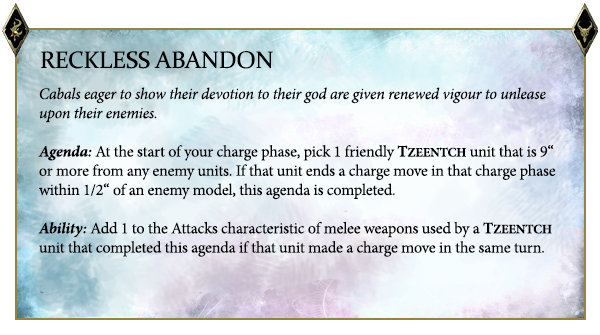
Command Traits
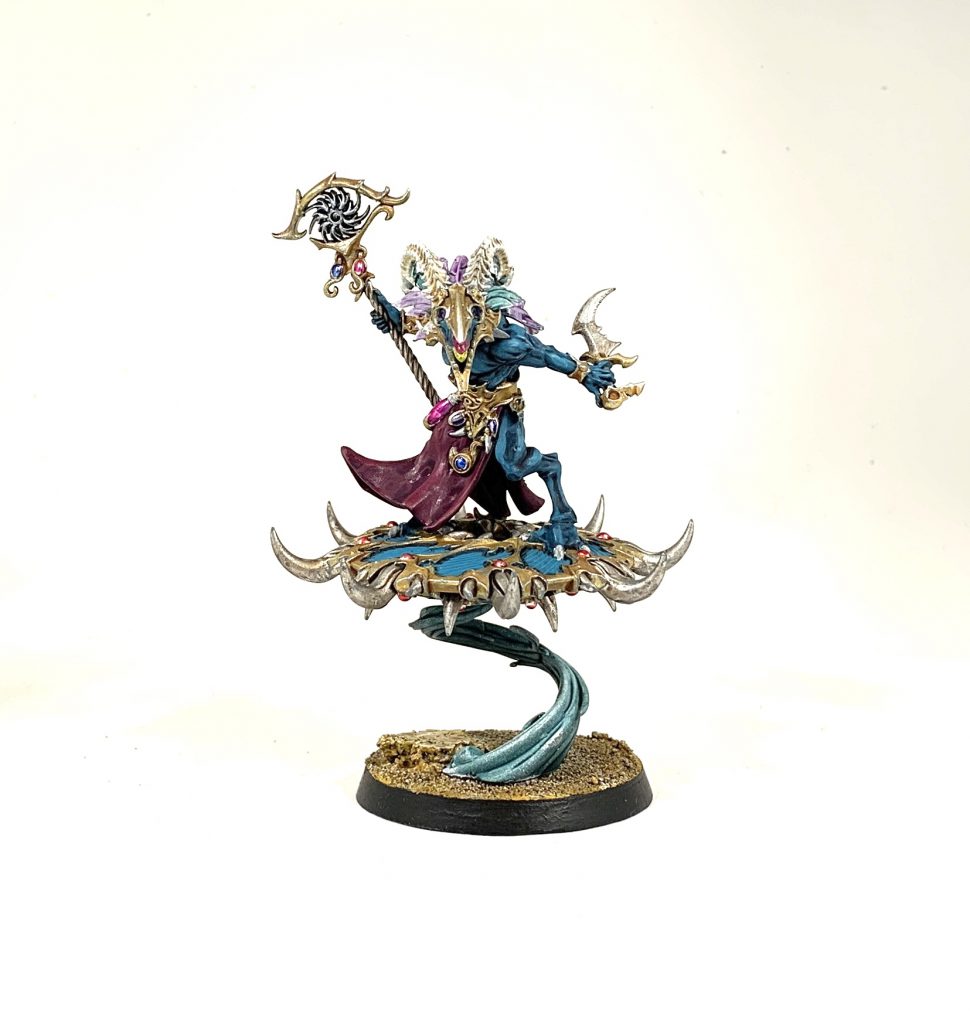
The command traits have remained functionally the same for the most part. This is good because Tzeentch had some really stellar ones. As a quick reminder, the traits are divided among 3 tables: Mortal, Arcanite and Daemon. The divide is a bit strange, as all Mortals are Arcanites, but not all Arcanites are mortals. In general mortals are whatever counts as humans (and strangely, the Ogroid Thaumaturge), and they all also have the Arcanite keyword. Tzaangors aren’t daemons, but they aren’t human either, so they get the Arcanite keyword but neither the Mortal or Daemon keywords. While previously the first three entries of each command trait table were identical – even sharing the same names – GW has accounted for this redundancy and cut the Mortal table down to 3.
Some out of date traits were given updates, such as Magical Supremacy now adding 12″ to the unbinding range, since AoS 2.0 changed the base unbinding range to 30″. This was in errata but its nice to have it in the same book.
A few weaker command traits were boosted to be more competitive. Nexus of Fate now lets you add any roll to your pool of destiny dice instead of just 1s or 6s making it a much more competitive choice. Cult Demagogue was completely rewritten to make any spell successfully cast on a double, regardless of the actual total, which is far more useful than the previous +2 bravery.
Artefacts
Artefacts got trimmed down quite a bit and admittedly some of the choices are headscratchers. While it made sense to shave down command traits, given half of them were shared across all 3 keywords, artefacts didn’t have those same hangups. There’s now 6 artefacts for Mortals, 3 for Arcanites (down from 6) and 9 for Daemons (down from 12).
There’s more changes here though. Tzeench artefacts in the first book suffered from being a lot of pretty mediocre options alongside 2 or 3 “must takes” so Games Workshop may have wanted to try and pare down the options. Some saw major changes like the Blade of Fate now replacing a Destiny Die on a 6 rather than rerolling hits and wounds. The original form of this artefact was pretty non-functional since it relied on you not using your army’s most powerful mechanic.
Most of the artefacts still more or less function exactly as they did. Some have had rewrites here and there to clarify things or bring them up to modern language used in the game, but it seems GW wanted to leave much of these alone since they were broadly working as intended. Sadly a fan favorite, the Windthief Charm is gone, apparently never to return. I would have preferred to bring other artefacts to its level rather than remove it as an option. At least my personal favorite, the Paradoxical Shield, remains and still does what it always did.
Spells
Yes, Magic. Tzeentch’s bread and butter. Tzeentch was one of the first armies with unique spell disciplines and he got 2 of them, one for Daemons and one for Arcanites, with 6 spells apiece. If you’ve been paying attention so far, you’ll be unsurprised to find that these spells haven’t changed much. Like the Command traits and Artefacts, the names are identical, and many spell effects follow the originals even closer than the ones before them, though the ones that did see serious changes have real tactical possibilities to consider.
Shield of Fate has been completely rewritten from the ground up. Previously it gave a unit saves that got better the more Destiny Dice you had in reserve. This was a pretty underused spell due to punishing you for using your Destiny Dice. While it still functionally works this way the boons granted are much better. With 1-3 dice you get a reroll 1 to saves, as before, but 4-6 gives a reroll to all saves and 7-9 gives reroll all saves and the ability to ignore magic on a 4+! That makes the spell a much more meaningful consideration – there’s a tension between using your dice and getting the most out of Shield of Fate which didn’t really exist before.
Treason of Tzeentch was made less interesting, though understandably so. The old form allowed you to take control of a unit and force it to attack its allies. While fluffy, anything involving taking control of an opponent’s forces is a goddamn headache for everyone involved so it makes sense why it was changed. Now you roll a die for each model in a unit and deal a mortal wound for each 6. If any models die, the unit gets -1 to hit until your next hero phase. Not as interesting, but much more utilitarian and way less likely to slow the game down.
Covens
With Covens we get something (almost) brand new to talk about. Subfactions are a recurring idea in modern Age of Sigmar books and nearly every army book since Soul Wars has had them. Since these didn’t exist when the original Disciples of Tzeentch book came out, these are technically new, although they did take inspiration from some of the warscroll battalions of the original. The Eternal Conflagration, The Host Duplicitous, Cult of the Transient Form and Pyrofane Cult all exist as subfactions now, though honestly in terms of mechanics they are borderline unrecognizable to their previous incarnations.
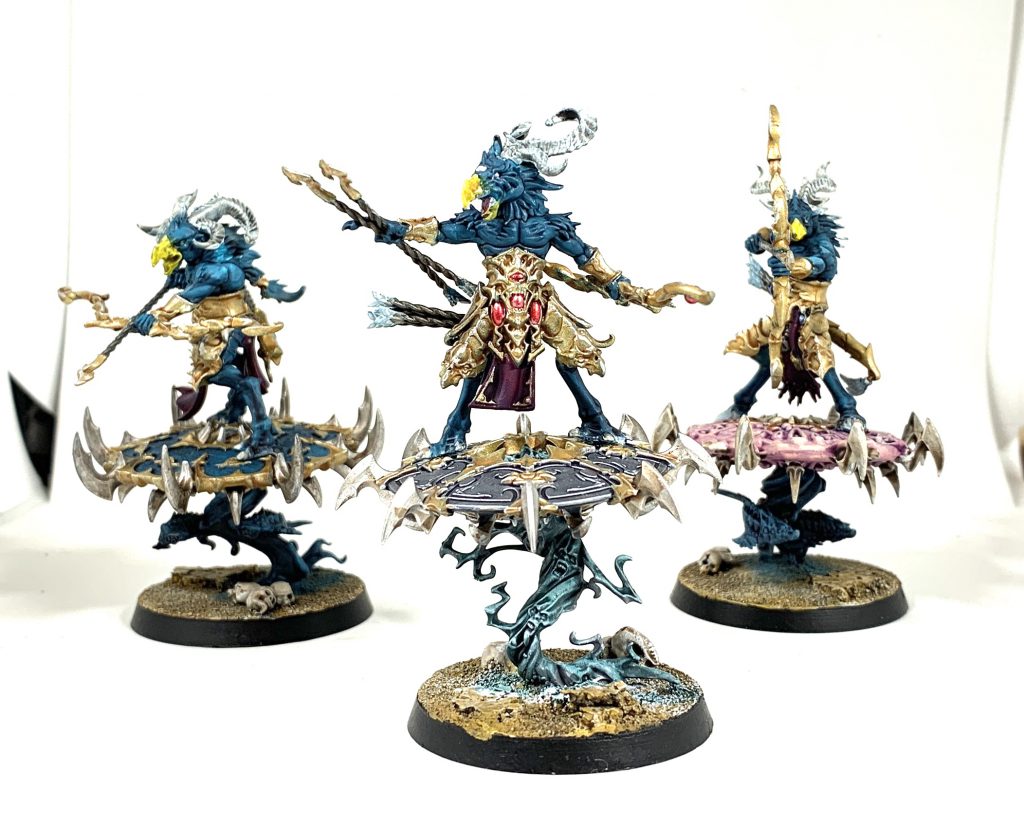
I expect The Eternal Conflagaration and Pyrofane Cult to be popular in tourney circles, depending on the flavor (mortal or daemon) players prefer.The former adds 1 rend to many daemons’ ranged attacks, while the latter adds 1 to hit rolls for Kairic Acolytes’ ranged attacks. Simple and straightforward buffs like this are often what tends to dominate though the others shouldn’t be overlooked. The new Guild of Summoners looks amusing for those who can afford multiple Lords of Change. It restricts summoning to only Lords of Change, but their cost is reduced to 9 for the first summoning, 18 for the second and 27 from the third on. While realistically you won’t see more than 2 in most games, hey, free Greater Daemons. Thankfully Lords of Change aren’t quite the hellish monsters that Keepers of Secrets are, so it’s unlikely this becomes a Problem like Hedonites were for a while.
Battalions
For the battalions that didn’t change (see what I did there) into subfactions, they all return here more or less intact as one would expect, though where things have been updated it’s largely nerfs with one exception. If the Tzeentch book had anything going for it above all else, it was the battalions were powerful. Games Workshop seems to have have noticed too because the ones that saw a lot of play were scaled back, perhaps in recognition of the higher power granted in other areas.
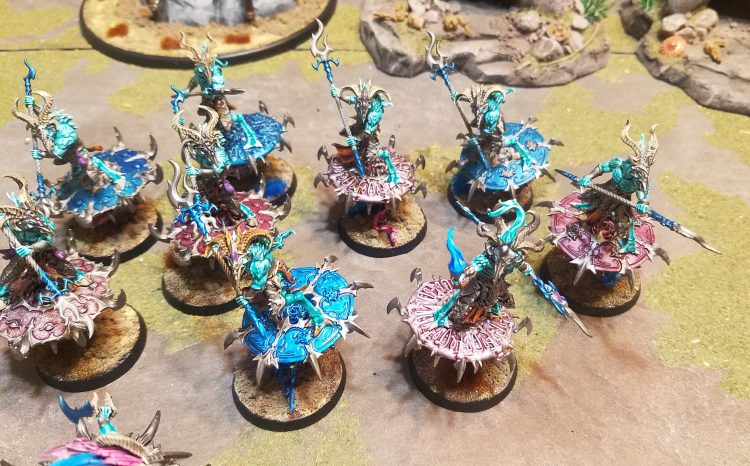
Witchfyre Coven now requires a third unit of Acolytes and only lets one shoot per hero phase. Changehost saw a bit of a side grade where now you can swap units wherever you please rather than with each other, with the downside that now you must be more than 9″ from an enemy model, which kind of puts a stop to any fun shenanigans of switching a Fluxmaster with a Lord of Change into combat. In good news, the Arcanite Cabal did see an upgrade; now you pick one friendly model from the battalion, and when Destiny Dice are used on that model, it gets to replace the dice used on a 2+ instead of a 4+, meaning there are some upsides if that’s something you were interested in.
Warscrolls
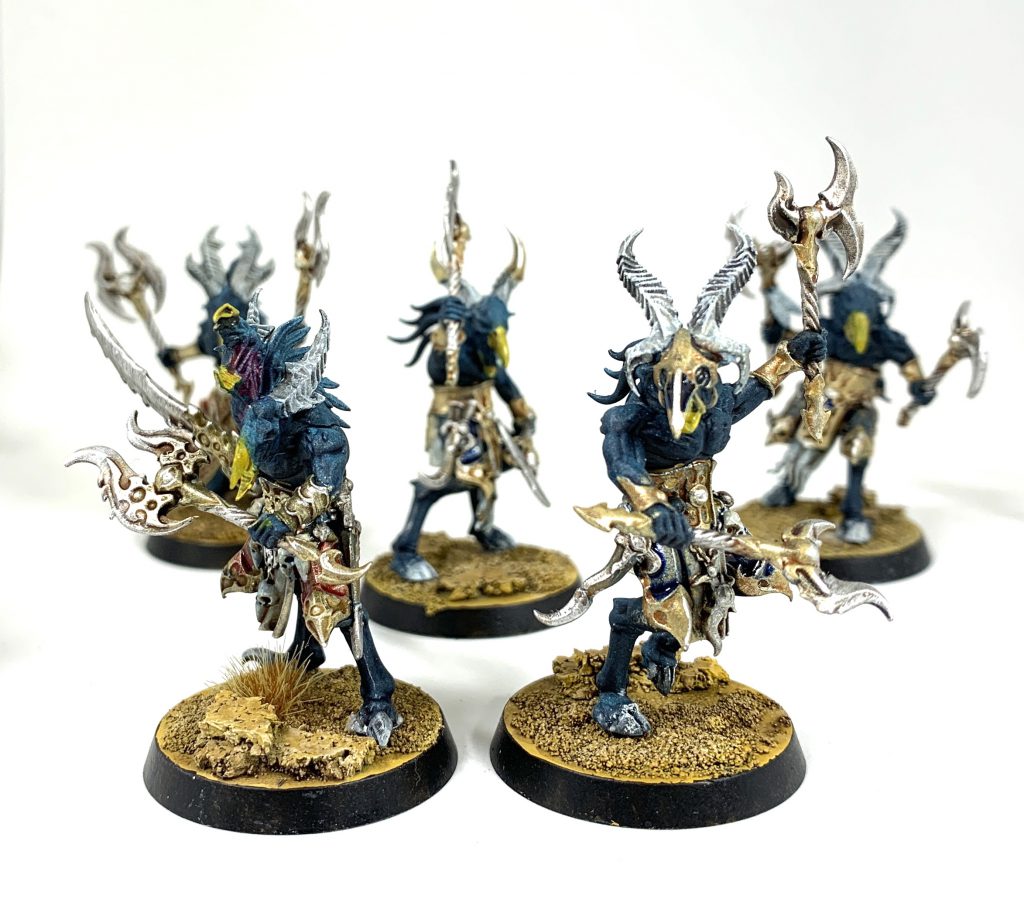
This section of the book is relatively uneventful to close things out, as the warscrolls haven’t changed a lot, though there’s a few new ones. Everything else has remained largely the same.
As far as new stuff goes, we do of course have the new endless spells. Like many other faction endless spells these aren’t great, though the models are, and the abilities they bring are at least interesting. The three spells are the Burning Sigil of Tzeentch, the Tome of Eyes, and and the Daemonic Simulacrum. The first two cast on a 5 and the latter casts on a 7.
The Sigil has random effects based on a d6 roll made at the end of your movement phase, ranging from Dismembered by Change (d3 mortal wounds to a visible unit within 12″, and if any models are slain then before removing the first you can place a TZEENTCH CHAOS SPAWN within 3″ of its position) to Shifting Aura (pick a unit within 12″ and visible to the spell, and that unit is -1 to hit until the start of your next hero phase).
The Tome of Eyes is less random, giving its caster an additional spell, the Parchment Curse, and also gives the caster the Transfixed by Countless Eyes ability – they can re-roll casting rolls, and any unmodified roll of a 2 or a 12 auto-casts and cannot be unbound! Unfortunately the caster also eats d3 mortal wounds after the spell has been resolved. Woops.
Unlike the first two, the Daemonic Simulacrum is a predatory spell. When set up it immediately moves, and after it moves it throws out a cool 9 dice at the nearest unit within 6″ and any 5+ is a mortal wound (or a 4+ if the unit is a WIZARD).
Of the old things that did change, some of them have changed for the worse, and my least favorite new thing is that the Changeling can no longer shape shift, hiding on the opponent’s side of the field waiting for the moment to strike. I’m genuinely going to miss this mechanic, he was the Changeling for Tzeentch’s sake! His entire thing was transforming into other things! In exchange for losing this he can steal spells from anyone he is within 9″ of, which has some powerful applications since he can still set himself up on the opponent’s side of the field except…without being able to hide he will likely die if you don’t take serious precautions. Losing this really sucks for me, the Changeling wasn’t great before but the goofiness of the rule is what drew me into Age of Sigmar to begin with. I liked that sort of weird stuff that made these units feel unique.
At least one new quirky rule is the Magister’s ability now turns him into a Chaos Spawn if he rolls doubles on his “free” casting. Was this needed? Probably not, Magisters weren’t exactly the most popular Hero choice to start out with and this just seems to punish them unnecessarily, although it is pretty funny. Speaking of Magisters, the new Magister on a disc in the Aether War box set launching alongside this book is the only actually new unit in the book and this is probably not going to be a must-have. All it does is give a 16″ movement on a mount, he doesn’t even get the daemon keyword! Usually GW has distinguished mounted variants of Heroes with different spells or command abilities but not here, that’s not the case, so the mobility bonus is the only real draw.
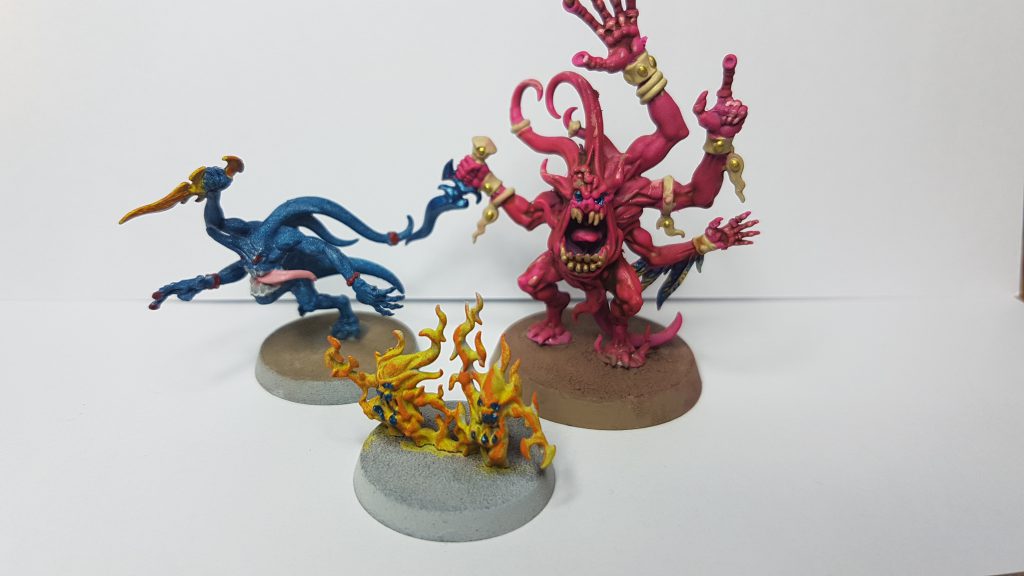
There is one big change here. Horrors are completely different now, in a way that has some pretty wide repercussions on the faction and even Grand Alliance Chaos overall. For those who haven’t experienced them before, Horrors were always a huge pain who would often try and vainly hug their opponent to death before dying. They’ve gone through many iterations over the years, because while a pretty simple concept to understand, documenting it in a way that wasn’t easy to rules lawyer or be too unbalanced was incredibly difficult. In their previous incarnation, dying Pink Horrors created a new unit of Blue Horrors if one didn’t exist, which you had to pay points for. This also spilled over to Blues becoming Brimstone Horrors. It wasn’t an easy concept to grasp and it also cost a ton of points that just made the whole thing unwieldy. Even worse, it lead to a lot of rules exploitation where Brimstone Horrors became easy battleline to fill up lists.
Now, GW has encoded the rules on the warscroll to allow mixed units. There’s now one warscroll to represent all colors of Horror, aptly titled “Horrors of Tzeentch”. Dying Pink Horrors add blue horrors to the same unit, and dying Blue Horrors add Brimstones to the unit. There, done. As previewed on Warhammer Community site, there aren’t any point costs tied to this now, with them being baked into the cost for the Pinks, which is a lot more straightforward. If you still wish to field Blue or Brimstone Horrors they covered that too. A base unit of Pinkies costs 200, if there’s no Pink Horrors in the unit you bump the cost down to 100. Just Brimstone? A piddly 80. But don’t try and get cute with cheap battlelines, they only count as battlelines if the unit starts with just Pink Horrors. It’s a lot of rules and if->then statements but I think they did the best they could to make a thematic and iconic mechanic workable, and cover off as many exploitable areas as possible.
But…the fun doesn’t stop there (maybe). As fellow Goonhammer author Ellarr pointed out to me, this has some pretty weird repercussions on the Gaunt Summoner. It can summon a unit of 10 lesser daemons as always, one of the options being 10 Pink Horrors. There’s a small problem here, the new Warscroll for Horrors is called “Horrors of Tzeentch”. Depending on how GW publishes this moving forward, the old warscroll actually called “Pink Horrors” may no longer exist. This probably needs to be errata’d or FAQ’d in some way because the ability to summon a 200 point unit that can split and split again might prove too powerful.
Final Thoughts
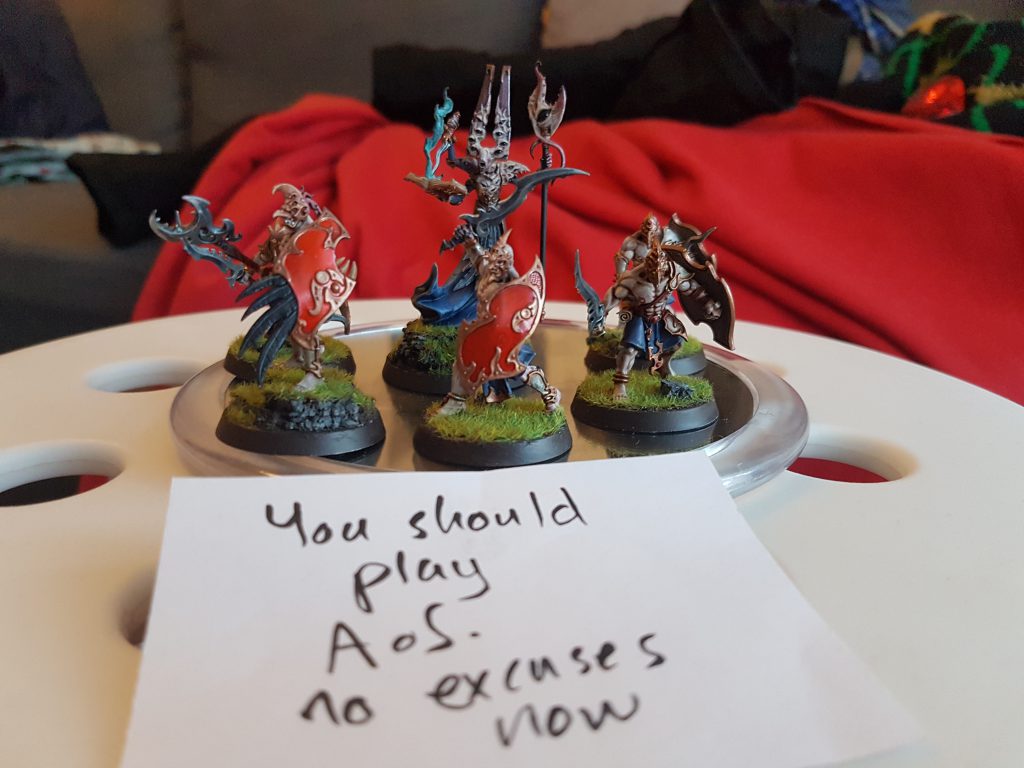
A lot of this review may sound like I’m disappointed, but I’m not. I felt like the original Tzeentch book was a strong foundation for what Age of Sigmar has become. It was one of the early books that set the standard for how the game functions in its current incarnation and the Tzeench book has held up remarkably well. The original had some strange or esoteric rules that wouldn’t work so well now, given how AoS is more balanced around competitive play than it was during the inception of the first round of this book, and that needed to be addressed.
The overall design philosophy of the army, a magic centered, ranged army was sound and gave the army its own distinct identity in the pantheon of AoS factions. What it needed was some numbers adjustments to really make that work and I think that’s been accomplished here. A lot of the more bizarre rules have been streamlined to be easier to follow, or even scratched out entirely. I do think in some cases, like the Changeling or Treason of Tzeentch, some of the charm and identity was lost in trying to strip out some of the more esoteric stuff, but it was something that had to be done to bring the book into the modern age.
People looking for a revolutionary change or a meta crushing army will probably be disappointed. I don’t think there’s much of that here, with the addition of the Covens being the notable exception as a large upgrade. Especially after GW’s recent attempts to taper off Slaanesh’s dominance of the competitive scene I think they’re a lot bit more wary of factions trying to shoot for consistent domination across the world. While Tzeentch himself might bawk at the idea that the army stays functionally similar, those that enjoyed the overall playstyle of the army will probably still be happy with this. The army’s general “feel” still holds here, it’s just been distilled down, into a product more fit for its contemporaries.
A big thank you to Games Workshop for sending us a preview copy, and if you have any comments, questions or thoughts on this review you can leave a comment, email us at contact@goonhammer.com or message us via our Facebook Page.


